Office interior design has come a long way in recent years, with businesses realizing the importance of creating a workspace that is both aesthetically pleasing and functional. One of the key elements of office interior design is the style in which the space is designed. There are a number of different styles that are popular in office interior design today, each with its own unique characteristics and benefits. In this article, we will explore some of the most popular office interior design styles and the benefits they offer.
Traditional Office Style
The traditional office style is one of the most common office interior design styles. It is characterized by classic furnishings, such as wooden desks, leather chairs, and bookcases. The color scheme is typically muted, with beige, brown, and cream being the most commonly used colors. This style is often used in law offices, financial institutions, and government buildings.
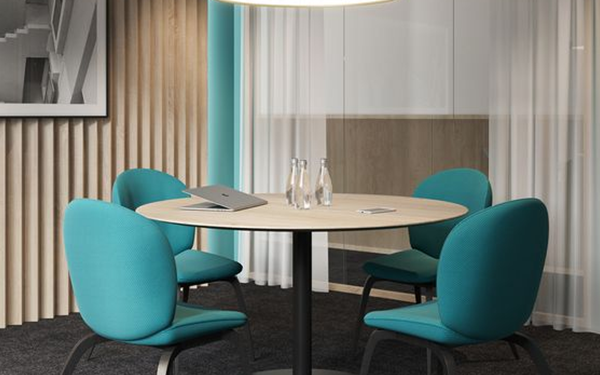
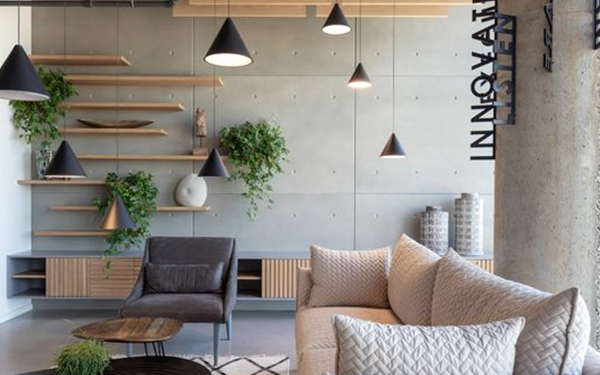
Modern Office Style
The modern office interior design style is all about clean lines, minimalism, and simplicity. This style is characterized by furniture with sleek, smooth surfaces and a color palette that includes white, black, and gray. This style is often used in technology companies and creative agencies.
Contemporary Office Style
The contemporary office interior design style is a blend of traditional and modern styles. It incorporates elements of both styles, creating a look that is both classic and modern. This style is characterized by clean lines, neutral colors, and a minimalist approach to furnishings. This style is often used in professional service firms, such as consulting and accounting firms.
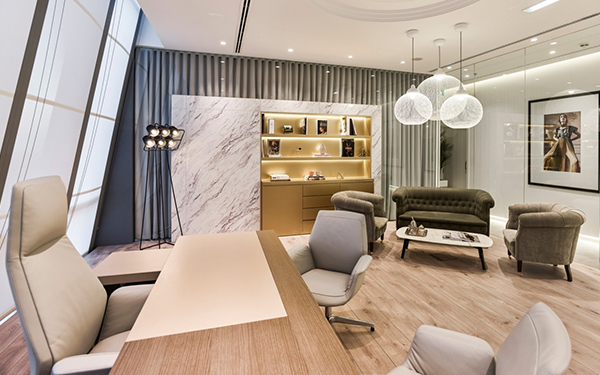
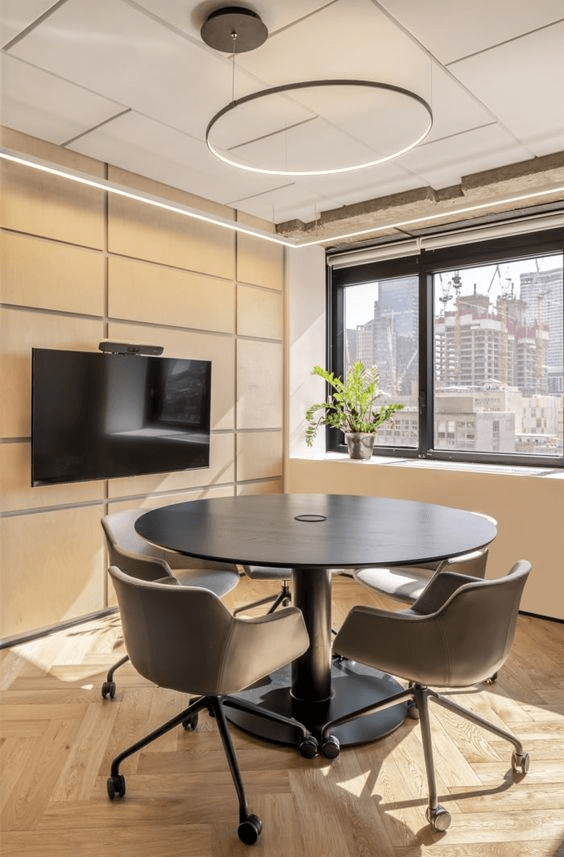
Industrial Office Style
The industrial office interior design style is characterized by exposed brick walls, concrete floors, and steel fixtures. This style is often used in creative agencies, architecture firms, and startups. The color scheme is typically neutral, with black, gray, and brown being the most commonly used colors.
Rustic Office Style
The rustic office interior design style is all about warmth and comfort. This style is characterized by natural materials, such as wood, stone, and leather. The color scheme is typically warm and inviting, with shades of brown, beige, and green being the most commonly used colors. This style is often used in law firms, financial institutions, and insurance companies.
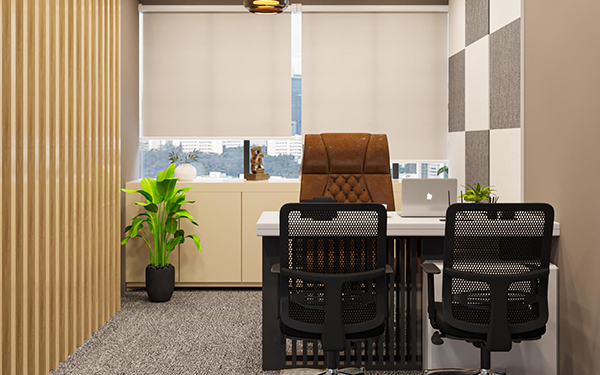
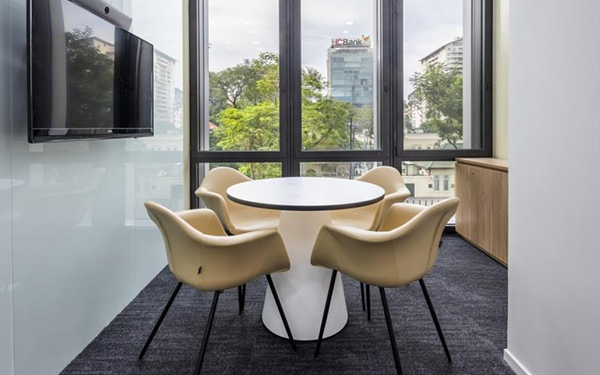
Scandinavian Office Style
The Scandinavian office interior design style is characterized by minimalism, functionality, and simplicity. This style is all about creating a clean, uncluttered workspace. The color palette is typically muted, with white, gray, and black being the most commonly used colors. This style is often used in design firms, advertising agencies, and technology companies.
Coastal Office Style
The coastal office interior design style is all about bringing the beach to the office. This style is characterized by light and airy furnishings, such as wicker chairs and wooden desks. The color scheme is typically light and fresh, with shades of blue, green, and white being the most commonly used colors. This style is often used in travel agencies, real estate offices, and hospitality companies.
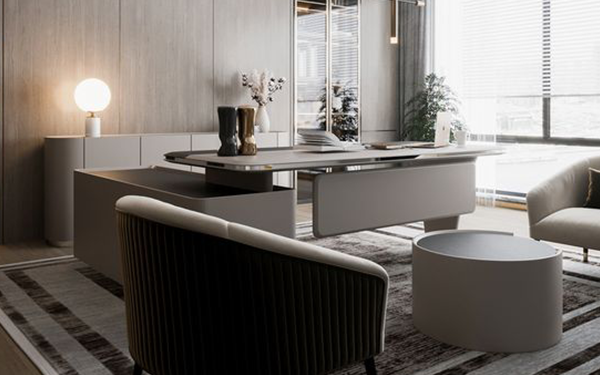
In conclusion, there are a number of different office interior design styles to choose from. Each style has its own unique characteristics and benefits, and the key is to choose the style that best reflects your business's culture and values. Whether you choose a traditional, modern, contemporary, industrial, rustic, Scandinavian, or coastal style, the important thing is to create a workspace that is both functional and visually appealing. By doing so, you can create an environment that inspires productivity and fosters creativity.
In today's world, many companies are starting to recognize the importance of creating a comfortable and productive work environment for their employees. One way to achieve this is by incorporating the principles of feng shui into office interior design. Feng shui is an ancient Chinese practice that aims to harmonize people with their surroundings, promoting good health and prosperity.
Here are some ways you can incorporate feng shui principles into your office interior design:
Clear the clutter
One of the most important principles of feng shui is the idea of clearing clutter. A cluttered office can cause stress and hinder productivity. To promote a sense of calm and focus in your office, Office interior design makes sure everything has its place and is organized. This means removing any unnecessary items from your workspace and storing them elsewhere.
Let in natural light
Natural light is an essential element of feng shui. It provides energy and enhances the flow of positive chi. If possible, position desks and workstations near windows to take advantage of natural light. If your office doesn't have enough natural light, consider full-spectrum light in your office interior design that mimics natural daylight.
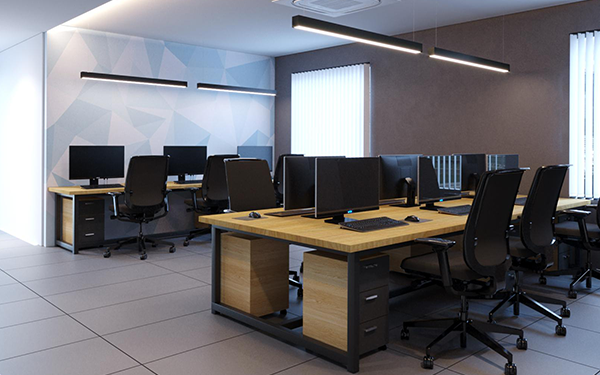
Use the right colors
Colors play a crucial role in office interior design. Choose colors for your office interior design that promote positive energy and productivity. Blues and greens are calming and promote focus, while yellows and oranges stimulate creativity. Avoid using too much red, which can be overpowering and create tension.
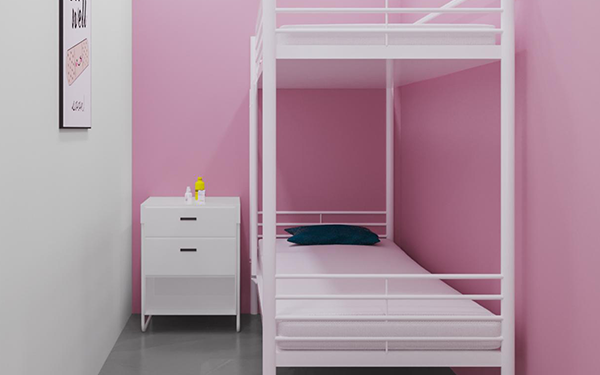
Position furniture wisely
The placement of furniture is critical in feng shui. Position desks and chairs to face the door or window, which promotes a sense of control and security. Avoid placing furniture in the direct path of doors or walkways, which can disrupt the flow of energy.
Create a balance of elements
In feng shui, there are five elements: wood, fire, earth, metal, and water. Each element has unique properties and represents different aspects of life. To create a harmonious balance in your office, incorporate all five elements. For example, you could add a small fountain or fish tank to represent water, or incorporate metal accents in your décor.
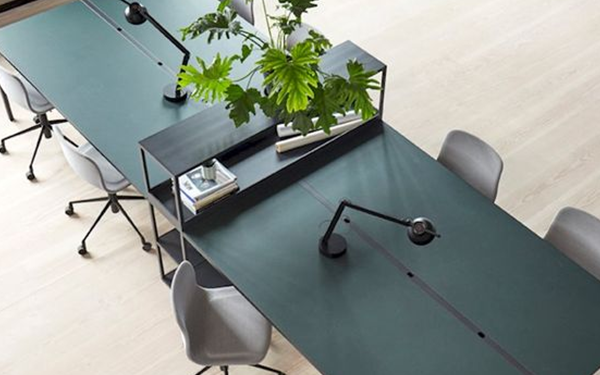
Incorporate plants
Plants are an excellent way to promote positive energy and improve air quality in your office. Choose plants with rounded leaves, which represent abundance and prosperity in feng shui. Place them in the southeast corner of your office, which is associated with wealth and abundance.
Create a balance of elements
In feng shui, there are five elements: wood, fire, earth, metal, and water. Each element has unique properties and represents different aspects of life. To create a harmonious balance in your office, incorporate all five elements. For example, you could add a small fountain or fish tank to represent water, or incorporate metal accents in your décor.
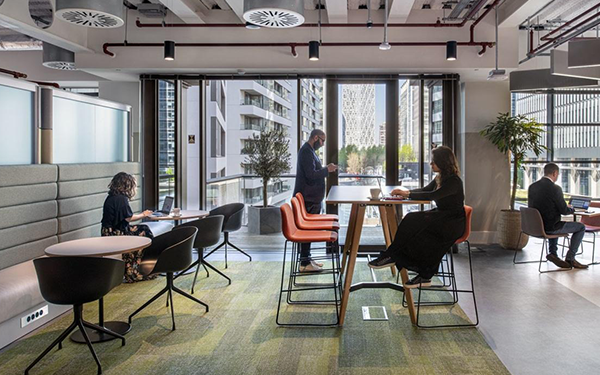
Use symbols of abundance
Symbols of abundance, such as a bowl of fruit or a plant with coins, are believed to attract prosperity and success. Use these symbols sparingly throughout your office to promote a sense of abundance and prosperity.
Incorporating the principles of feng shui into your office interior design can improve productivity, promote positive energy, and enhance the overall atmosphere of your workplace. By following these tips, you can create a comfortable and productive work environment that promotes success and prosperity for everyone in your office.
Designing an office interior design space for a tech company requires careful consideration of a range of factors. The right design can help foster creativity, productivity, and collaboration among employees, while also projecting a professional image to clients and visitors.
Here are some key design considerations to keep in mind when designing an office space for a tech company:
Functionality:
Tech companies require a space that is both functional and flexible. The layout of the office interior design should be optimized for the work being done, with designated areas for collaboration, individual work, and socializing. It's important to consider the specific needs of the company and its employees, such as the need for ample desk space, meeting rooms, and storage.
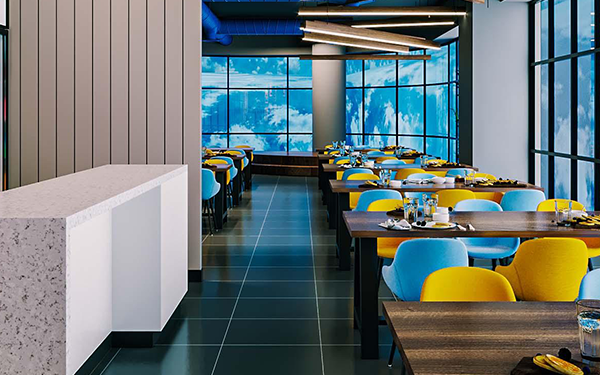
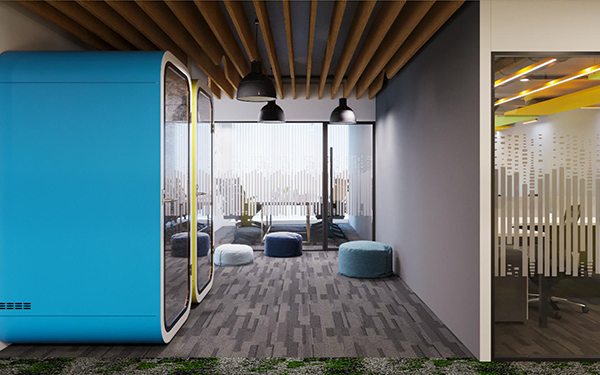
Comfort:
The comfort of employees is essential to their productivity and wellbeing. Ergonomic furniture, adjustable lighting, and temperature control are all important factors to consider when designing a tech office. Additionally, incorporating comfortable breakout areas and relaxation spaces can provide employees with a place to recharge and refresh throughout the day.
Branding:
The design of the office space should reflect the company's brand and culture. This can be achieved through the use of colors, materials, and graphics that align with the company's visual identity. By incorporating branding elements into the office interior design, employees will feel a greater sense of connection to the company and its mission.
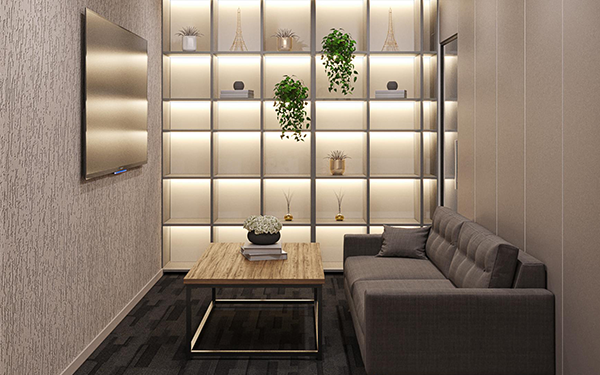
Technology:
Tech companies require cutting-edge technology to perform their work effectively. This includes high-speed internet, secure data storage, and video conferencing capabilities. It's important to consider the placement of technology throughout the office space to ensure it is easily accessible and functional.
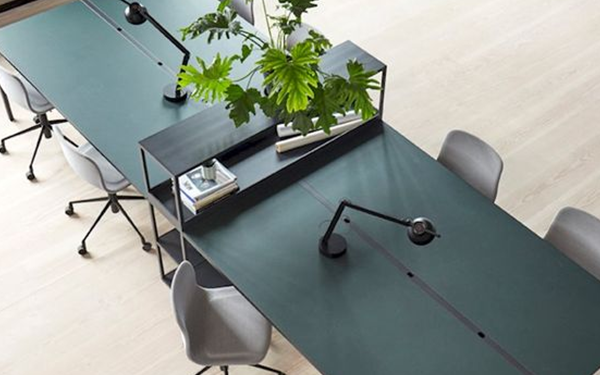
Sustainability:
Tech companies are often at the forefront of innovation, including sustainable practices. Designing an office space with sustainability in mind can help reduce the company's environmental impact and promote a culture of eco-friendliness among employees. This can include incorporating energy-efficient lighting and HVAC systems, using sustainable building materials, and providing recycling stations throughout the office.
Flexibility:
Tech companies are known for their fast-paced and ever-changing work environment. Designing an office interior design space with flexibility in mind can help accommodate future growth and changes in the company's needs. This can include using modular furniture, movable partitions, and flexible workspaces that can adapt to the changing needs of the company and its employees.
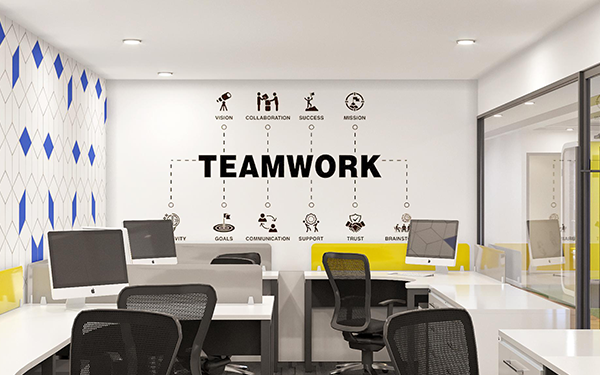
In conclusion, designing an office interior design space for a tech company requires careful consideration of a range of factors. By focusing on functionality, comfort, branding, technology, sustainability, and flexibility, a well-designed tech office can promote productivity, creativity, and collaboration among employees while projecting a professional image to clients and visitors.